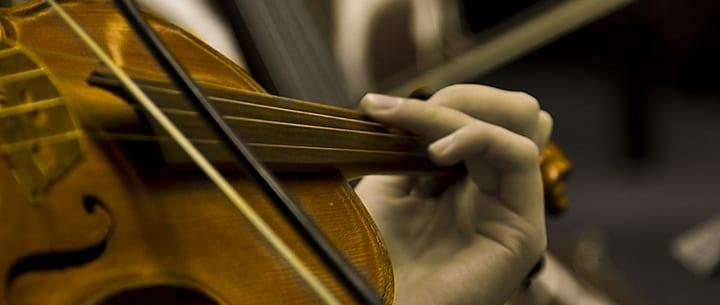 As much as every budding violinist would love to pick up their instrument and begin playing beautiful music, the work required to get there is much more mundane – every breathtaking performance requires strategic and focused warm up exercises beforehand. These routines help you develop and maintain your basic violin skills as well as gear up for more advanced techniques, too.
As much as every budding violinist would love to pick up their instrument and begin playing beautiful music, the work required to get there is much more mundane – every breathtaking performance requires strategic and focused warm up exercises beforehand. These routines help you develop and maintain your basic violin skills as well as gear up for more advanced techniques, too.
For beginners, it may be difficult to know even where to start; after all, everything seems to need work. However, using the beginning of each practice session for a warm up will optimize each day’s result and pave the way for strong playing for months and years to come.
Although warm up exercises will vary from person to person based on the advice of your violin teacher, there are certain exercises that can benefit everyone. Here are five beginner violin tips that will help you grasp the fundamentals:
-
Long open strings. Playing long open strings does several things: it lets you practice consistent intonation with each stroke, it allows you to become familiar with your bow’s weight and speed across the strings, and lastly, it helps ensure that your bow remains in the proper location on the strings in relation to the bridge. Look into a mirror and place the bow on the string in the proper point and pull the bow across the string, listening for a clear, clean, and consistent note. As you play, continually check in the mirror for your bow’s contact point. Repeat at least five up and down bows before moving on to the next string.
-
Finger placement. Correct finger placement is essential for playing the right notes on the violin, and to learn this correctly, you must practice! One of the tried and true beginner violin tips is to play simple scales in first position. This trains your fingers to understand where they belong on the fingerboard in relation to the other fingers, and it trains your ear to hear each note as it should be played. To practice, pick any scale, and play each note slowly, separately, and precisely. Always play with a tuner so that you can tweak your finger placement for proper intonation.
Fourth finger practice. Placing your fourth finger on a string creates the same note as the subsequent higher open string. Some beginner violinists use the open string to play the note because it is much easier and you know that the note will be correct. However, as you advance, there will be times where you cannot access the open string to play the note, or it is much less efficient to do so. Therefore, you need to strengthen your pinky finger! Start by playing the open string, then mimic that note using your pinky on the lower string about five times for each string. Listen carefully – does the fourth finger note match that of the open string? Don’t get discouraged if it’s difficult to even stretch your pinky at first – it will take time for it to gain strength and flexibility.
Slurs. A slur allows you to play two or more notes in a single bow stroke. To do this, start by placing the end of your bow close to the frog on the string. As you slowly but steadily bring your bow across the strings, place and then remove your first finger in the proper place while keeping your bow straight. Also make sure that you place your finger on and off the strings at regular intervals – using a metronome will help you. Start with two notes per bow stroke.
String crossing. The final of the beginner violin tips is the ability to make a clean change from string to string while playing. Keep your elbow at a right angle to form a square – include the bow and trace an imaginary line from your shoulder to where the bow hair touches the string. Rock the bow to each string while practicing your long bow strokes. Make sure that your arm and bow remain in the same plane, and use the natural weight of your arm on each string.
Because these warm up exercises set the tone, so to speak, for your practice session and for your learning overall, always perform them with focus and intent. They don’t need to take long – a dedicated five or 10 minutes should suffice. If you are unsure of what to practice or exactly how to practice, ask your instructor about beginner violin tips – they have the knowledge and experience to guide you in the right direction.
Photo by Daniel Jason Karjadi
Megan L.
